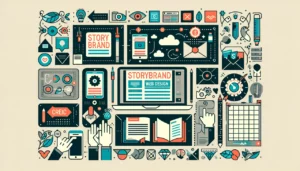Recently I was showing off a website that I had created to my wife. Her comment (besides, of course, first praising my amazing work) was how stark, and white it seemed. She remarked how it looked similar to other sites I’ve made recently. It got me thinking. Am I dialing it in on the design-side? Have I become lazy and not allowed enough diversity in how I see the web, and my small part in the creation of websites?
I took some time to look at the last couple of dozen websites we launched. To me, having worked in HTML, worked in the short codes, fine-tuning spacing, layouts, content selection, appropriate photography, engaging titles and font choices the sites all seemed very different and special to me. Stepping back though I was able to see a few trends that for better or worse had set in.
The word trend gets thrown around sometimes and often is mistakenly used alongside trendy. Trends are just the way things are going, the way they are changing or developing. Some trends are good and logical. Like technology. Technology trends, usually, towards better, smaller (or bigger if it’s screen size), more efficient, more user-friendly, and that makes sense. There are however other things that people call trends, that are more like fads.
Trends are comprised of a series of small leaps, some larger, but all pointed towards an ongoing process that has an easily defined purpose and goal. A good example of a trend in web design would be the saturation of content management websites. It used to be in the past that we would design a website, convert it to HTML (code) and that would be that. But along the way, blogs emerged and iPhone photography and people’s general better understanding of technology, as well as a great “free” CMS – WordPress.
These things all added up to clients wanting more control over their websites, and needing the ability to make changes, and engage viewers by keeping things up to date, and relevant, and “moving” on their website. So instead of 90% traditional HTML websites, and 10% custom CMS, or WordPress sites, just a year or 2 ago, we’ve almost swapped those numbers to the point that almost every new site we build has some component built in a content management system so that clients have more control.
Where are you going with all of this…
More people use their mobile devices to connect to the internet than ever before, and more use them over a traditional desktop or laptop even. This has given rise to recent trends in the way sites are designed.
Full width sites with no background are easier to port to the phone size or iPad size. Scrolling is much easier on a mobile device rather than traditional clicking page tabs across the top of the website. Responsive sites can change their width and layout to maintain the best view on any size screen. Less clutter, larger images, cleaner, easy to read fonts, and poignant to the point relevant information has replace the “glut” or websites in the past, as there is only so much real estate on a 4-5 inch screen.
The case I am trying to make is that the current trend in website design nowadays is much more a trend than a fad. Fads come and go, as people lose interest in what is hip, but trends will continue to evolve and change with the pace of technology.









